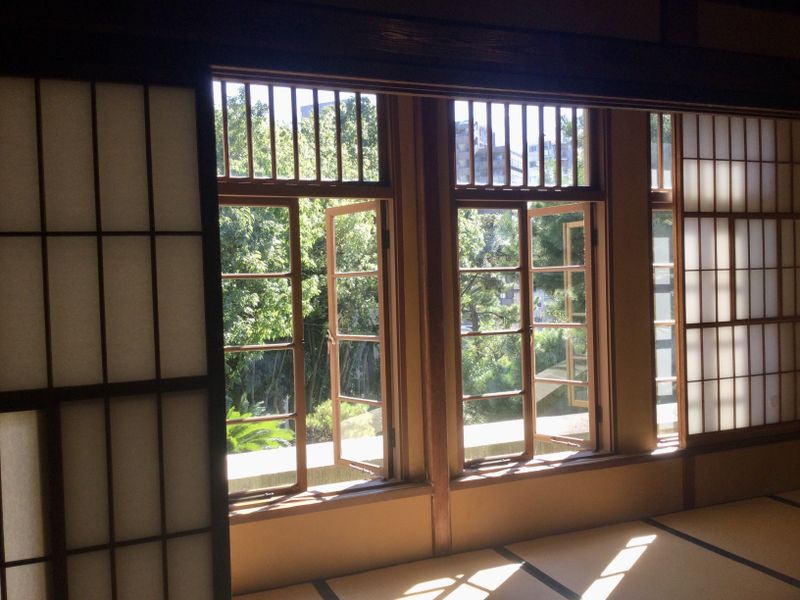Oct 4, 2024
A second visit to Chiba City for Inage's history
About 20 years ago, on my second sojourn in Japan, I found a home in Chiba City’s Hanamigawa Ward. With a weak grasp of Japanese and a sketchy ALT dispatch company job, I managed to find a tiny apartment within a 10-minute walk to a train station and explored on a rickety bicycle. My time there predates Japan’s explosive tourism boom, so there were few foreign language resources, and translating info was tedious. Serendipity and chance encounters with local people afforded glimpses of the city’s charm. So, while I had a rich experience there, I missed a lot of nuance.

Taisho era villa window on Inage Ward
I told you about rediscovering Chiba City on a day trip, which was, in fact, a visit to the commercial and government hub in Chiba City’s Chuo Ward. Chiba City, divided into six wards with Chuo, the administrative center, is home to Inage, the smallest with its own distinctive character.
Modern Inage was a seaside retreat in the Taisho era, but land reclamation projects created Maihama Ward facing Tokyo Bay putting about 3 kilometers of residential and industrial land between Inage and the shore. That landfill became Mihama Ward, accounting for the distance from Inage Seaside Park.
I visited on a blazing hot September morning, heading for the shade. Inage Park, a rolling landscape recognized as one of Japan’s top 100 pine tree forests is noted for the 根上がりの松, ne agari no matsu, pine trees standing on their roots. You can imagine Tolkien’s ents plodding through the forest.

The forest surrounds Inage Sengen Shrine, dedicated to Konohanasakuya-hime, the goddess of Mt. Fuji. The shrine is on a man-made hillside built to resemble Mt. Fuji and its paths to the peak. While the shrine is a 1960s reconstruction, the shrine has a 1200-year history. I want to go back to see the Kagura dance performed at ceremonies.
Adjacent to the shrine is a villa celebrated for its royal tenants. Aisin Gioro Pujie's Former Residence is a cottage, free to enter, where Pujie, the younger brother of China’s last emperor, lived with his Japanese noblewoman wife.

What a story, too. They had an arranged marriage meant to create ties between Japan and Manchuria, their eldest daughter and her lover committed suicide when their relationship was opposed, and the family was pulled back and forth between Japan and China. The house has a lovely garden and a mix of western and teahouse-style architecture.
My last stop was Former Kamiya Denbei Inage Villa. When you visit Asakusa, you can visit the historic Kamiya Bar, and at Ushiku in Ibaraki Prefecture, Chateau Kamiya. These spots are the legacy of Kamiya Denbei who created one of Japan’s first wineries. The Inage villa is his guesthouse that once had a view of Tokyo Bay.

The first floor looks like an Edwardian era manor and the second floor has elegant Japanese-style rooms. There are many grapevine motifs in the carpentry. Take your time to gaze around to spot some fine details.
Did you know about these historic connections in Chiba City?



0 Comments